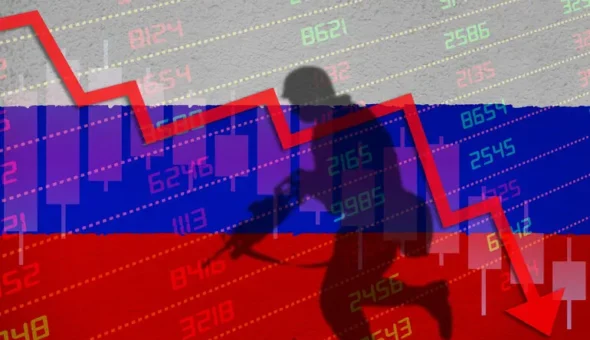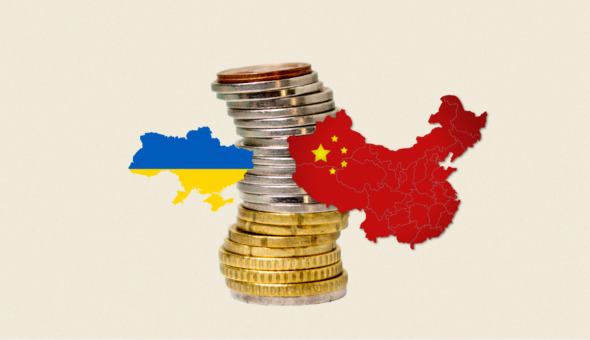
How russian aggression will affect the Ukrainian harvest, what challenges the war poses to farmers, and how much food the world will lack – these are the topics discussed by experts, officials, and the general public at the discussion panel “Due to the russian war, the world is threatened with hunger: less grain will be harvested in Ukraine,” organized by the National Interests Advocacy Network “ANTS” in collaboration with the International Center for Ukrainian Victory (ICUV).
According to Hanna Hopko, the head of the “ANTS”, it is critical to hear the voices of experts and farmers before sowing 2023 in order to understand what has to be done so that Ukraine, which is one of the top five global food exporters, can continue to feed the world.
“After the full-scale invasion of the russian federation into Ukraine, the International Center for Ukrainian Victory devoted the matter of providing Ukraine with food to the whole world as one of the primary objectives back in April of last year. In the US Congress, we had a separate briefing on the issue “How the Russian murderous war will influence the distribution of food from Ukraine to the countries of Asia and Africa. Later, we conducted a second report on the impact of Russian aggression on the global food crisis and the global food market in cooperation with the Ukrainian Club of Agrarian Business. And on the eve of the Ramstein talks,” – Hanna Hopko explained.
In 2023, about 22 million hectares will be sown in Ukraine
The Ministry of Agrarian Policy and Food of Ukraine predicts that in 2023, about 22 million hectares will be sown in Ukraine.
“If our seeded area in 2021 was about 29 million hectares, the prediction for this year is around 22 millions hectares. Of course, reducing the amount of fertilizer applied will have an effect on the gross harvest. Grain profitability was nearly zero last year, and in certain areas far from ports, it was even negative. Farmers made some money from oil crops, but it is not a profitable venture,”- said Ihor Vishtak, director of the Ministry of Agrarian Policy’s Department of Agrarian Development.
He stated that all food groups in Ukraine will be available for home consumption.
“Seasonal imports of vegetables and fruits will continue as usual. However, this is not a global issue,” – the expert went on to say.
According to the director of the Government of Agrarian Policy’s Department of Agrarian Development, the area under grain crops in Ukraine has dropped, and the ministry forecasts a decrease in gross grain harvest, particularly corn.
“Because we still have an unharvested corn crop, substantially less of this crop will be sowed in the spring. And this is the primary gross crop exported,” – Vishtak was categorical.
Ukraine’s grain export potential will be cut in half
According to the Ukrainian Agrarian Business Club (UKAB), Ukrainian farmers will only be able to export 20 million tons of grain in 2023.
During the discussion panel, UKAB’s general director, Roman Slastyon, stated, “Due to the Russian war, the globe is at risk of famine: less food will be harvested in Ukraine.”
“This season, I mean sowing, will be incredibly challenging for farmers, even more difficult than previous year. Fortunately, most agricultural producers were already prepared for sowing last year, having acquired fertilizers, seeds, and fertilization equipment. Everything had been planned “Slastyon stated.
Ukraine’s export potential will be reduced threefold. According to Slastyon, the fall in exports will be mostly due to a decrease in this year’s harvest.
“According to the association’s projections, grain yield will be 34 million tons, which will be sufficient for local production. However, the export potential will be reduced thrice. And it will not exceed 20 million exports. This will have an impact on both agricultural producers’ well-being and monetary inflows into the country and economy,” – the expert stressed this point.
Based on the expert, less grain will be planted in Ukraine this year due to low profitability and a shortage of finances from farmers, particularly for fertilizer purchases.
Slastyon highlighted that the harvest drop will not affect domestic food security, and that Ukraine will be supplied with grain and oil this year.
A few more important comments from the panel discussion
About the grain corridor
“According to the association’s projections, grain yield will be 34 million tons, which will be sufficient for local production. However, the export potential will be reduced thrice. And it will not exceed 20 million exports. This will have an impact on both agricultural producers’ well-being and monetary inflows into the country and economy,” – the expert stressed this point.
Bohdan Kostetskyi, an expert on agricultural supply chains, emphasized that the capacity of the grain corridor is 5-6 million tons per month.
“Because of the fact that representatives of the russian commission are sabotaging, today it is only 100 thousand tons each day, and this is just three million grains per month. We currently have 33 million tons of grain left over, which includes 21 million tons of corn, 11 million tons of wheat, and 2.5 million tons of barley. With such dynamics, exporting what is available till the beginning of 2024 will be necessary. I’d like to call attention to the fact that when the russians left the grain corridor for three days in November, the UN and Turkey allowed more than 1.5 million tons of grain through. That is why we must discuss the assistance of our strategic partners, because the corridor must function without sabotage by the russian federation, with a throughput capacity of at least 5-6 million tons per month”.
About alternative solutions
Roman Makukhin, the head of the “ANTS” Network’s analytical department and an expert on AgriFood and the European Green Deal (FAO), recommends agricultural producers to seek alternative options for the Ukrainian agricultural sector.
“When discussing foreign experience, it is important to consider European experience. Producers with up to 100 hectares – the format used throughout Europe. When it comes to assistance, it is given based on the volume of work done by the farmer. If alternative solutions are to be developed, the focus should be on the medium and small farmer, who is more adaptive and can adjust faster. Yes, he will have more logistical challenges, and this is the time for collaboration and interaction with the government to address the issue of agricultural product preservation, storage, and transportation. We should also discuss the specialty products that our farmers effectively manufacture and export. The organic production sector is undervalued. And in Europe, the approach is based on the shift to organic products. According to the European Green Deal, Europe intends to increase organic production by 25% by 2030. As a result, other alternatives, such as the move to organic technology and niche manufacturing, are required”.



